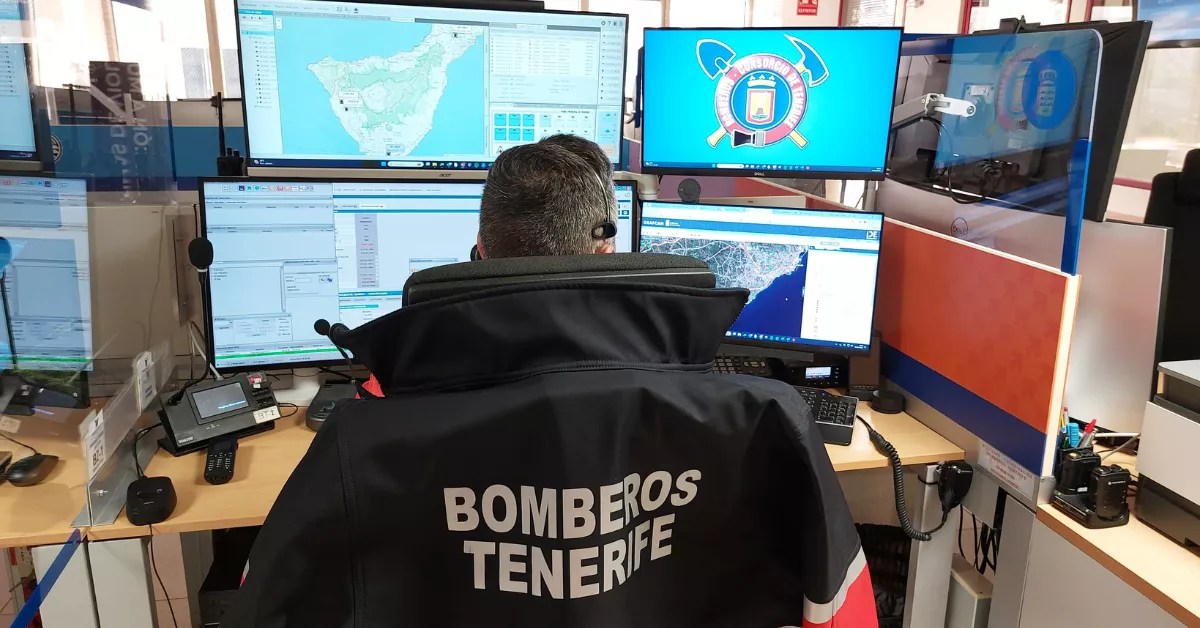Adolfo Cordobés, the Councilor for Territorial Planning and advisor-director of the Urban Planning Management of the La Laguna City Council, made an announcement yesterday regarding the removal of a 5G mobile phone antenna that a company had installed in Valle de War back in February. This decision was declared during an extraordinary session of the plenary, requested by Unidas se puede, Drago Verdes Canarias, and the Popular Party, to address three motions brought forth by the local community members who were present in the room with protest banners.
One of the key demands from the residents of Valle de Guerra was the removal of the antenna installed in February (although not yet operational), as they expressed concerns about its proximity to children’s areas and questioned its compliance with legal requirements, thus demanding its withdrawal.
Cordobés clarified that, under municipal jurisdiction, technicians identified deficiencies in the company’s documentation. He stated, “since the issues were not rectified, a mandatory report was sent to the relevant Ministry.” He further elaborated, “As there was no opposition within the specified period,” continuing, “the company’s submitted declaration was deemed ineffective on the 23rd of this month, and the file was forwarded to the urban planning discipline service to commence the process of restoring legality.”
Meaning, “we will instruct the removal of the antenna from the property because it did not meet the urban planning criteria, which fell within the limited jurisdiction of this council. Hence, the antenna will be dismantled within the stipulated timeframe,” he asserted.
Unanimously, the plenary session approved a mutually agreed-upon text between the motion and the amendment presented by the Government group (PSOE-CC), urging the municipal government to draft a new telecommunications ordinance. Furthermore, they stipulated that, in the formulation of the new PGO, “the deployment of these infrastructures should be examined to mitigate any potential adverse effects.”
Residents of Valle de Guerra also voiced their opposition in the plenary session to the Cabildo’s desalination plant project in the area, which they believe deviates from the sustainable development model instituted by the city council. They raised concerns regarding the high energy consumption and waste output, advocating for alternative solutions.
The local government defended the project and, through their presented amendment, approved solely by their votes, they stated that the construction “must adhere to the conditions, protective measures, and compensatory actions identified in the project’s environmental assessment, along with the surveillance plan.
They further recommended that “the necessary actions be initiated to implement the measures outlined” in the sustainable development model, where they suggested that “desalination should be utilised when renewable energy is readily available.”
The Water area councilor, Ángel Chinea, elucidated that this project “was not an impromptu decision,” but an initiative proposed by the Insular Water Council as early as 2008, which has since been modernised with new technologies. It was noted that “the Tenerife commission, in September 2021, authorised an environmental impact assessment for the project, determining its minimal environmental impact.”
Water Scarcity
The mayor highlighted that the endorsement of the desalination plant “does not signify negating the purification or enhancement of sewage networks, but rather emphasizes its necessity in the declared water emergency by the Cabildo.” He cited data indicating that “the Los Aquifer Rodeos, supplying 20% of the municipal water, is depleting at a rate of approximately 5,000 cubic meters annually,” projecting a deficit of 453,916 cubic meters by 2024.
He pointed out that “La Laguna is the sole one among the four major Archipelago cities” lacking a desalination plant supply assurance, especially with the substantial water demands originating from the island infrastructures.”
Ángel Chinea also highlighted that while 78% of the homes in the Tejina and Valle de Guerra region could connect to the municipal sewage network, only 40% have, with “1,400 of these homes situated within ten meters of the network.”
Positively, he commended that water losses in La Laguna are at a low of 13%, meaning an 86.91% hydraulic operational efficiency. He pointed out that “in September of this year, 100% of the water from the La Punta treatment plant will be utilised by farmers.” Additionally, he recalled the focus on natural purification, exemplified by one in Las Carboneras.
Cultural Heritage
Similarly, during the plenary session, a motion advocated by the Association of Neighbors of the Historic Center requested the revision of the Special Plan for the Protection of the Historic Centre (PEP), the development of a management plan, or the establishment of a heritage board, among other suggestions. The Councilor for Cultural Heritage, Adolfo Cordobés, indicated that a citizen consultation process is scheduled for updating the PEP, with an allocated budget. Additionally, the formulation of a management plan is in progress, and there will be a meeting of the Municipal Council of Cultural Heritage soon after the member renewal.
Furthermore, he highlighted that the Government group is advancing the formation of a Comprehensive Management Office of the Historic City to supervise and coordinate various municipal initiatives within the town. Ultimately, an amendment from the local government was approved by their votes, emphasising the ongoing heritage works and projects in progress.
















